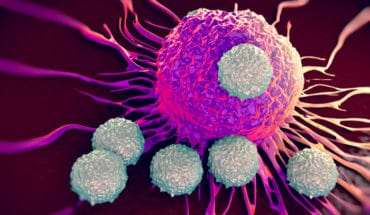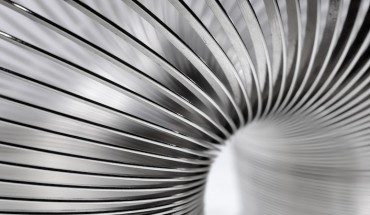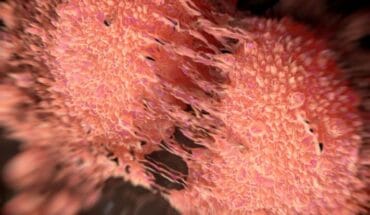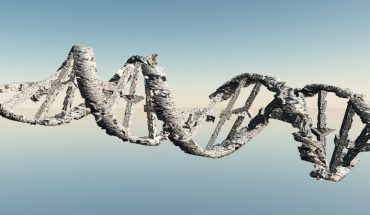Breast cancer is the most common cancer in the U.K, and causes 55,200 new cases every year.
Around 70 per cent of breast cancers are so-called ER positive, which means the cancer cells contain a receptor for the hormone oestrogen. It is this hormone that fuels the tumours.
Patients with this type of cancer are offered one of two drugs after surgery to prevent the cancer coming back.
One of these drugs, called tamoxifen, prevents oestrogen from binding to DNA in cancer cells, while the second type of treatment, called aromatase inhibitors, prevents residual oestrogen from being produced in other tissues.
The latter drugs are usually used in women who have gone through the menopause. These women’s ovaries have stopped producing oestrogen, but some of the hormone is still made in several other tissues by an enzyme called aromatase. The medication prevents this enzyme making oestrogen.
However, both tamoxifen and aromatase inhibitors stop working in around one in three patients.
Scientists assumed the tumours developed resistance in some way, but didn’t know how.
Now, scientists from an international team led by Imperial College, London, and the European Institute of Oncology in Milan have discovered why this happens. Some breast tumours evolve to make their own ‘fuel supply’, rendering treatments powerless.
The team, whose findings are published in the journal Nature Genetics, hope their work will increase treatment options for patients whose cancer has returned.
In the latest study, the team discovered that in one in four patients taking aromatase inhibitors, the tumours had increased production of aromatase in the cancer cells. The tumours appear to do this by increasing the number of aromatase genes, in a process called amplification.
This allowed the cancer cells to effectively make their own oestrogen, without relying on external sources of the hormone, explained Dr Luca Magnani, co-lead author of the research from the Department of Surgery and Cancer at Imperial: “For the first time we have seen how breast cancer tumours become resistant to aromatase inhibitors. The treatments work by cutting off the tumour’s fuel supply – oestrogen – but the cancer adapts to this by making its own fuel supply.”
The researchers also discovered that tumours become resistant in different ways, depending on whether tamoxifen or aromatase inhibitors are used.
Almost none of the tumours in patients taking tamoxifen had increased production of aromatase to boost their oestrogen supply – and the team are now planning further studies into how cancer cells become resistant to tamoxifen.
In the current research, the team analysed tumour samples taken from 150 women whose breast cancer had returned and spread around the body. All the women were treated at the European Institute of Oncology in Milan.
The team are now working on a test to identify whether a patient’s tumour has started to increase aromatase production, and make its own oestrogen.
“In many cases when an aromatase inhibitor stops working in a patient, doctors will try another type of aromatase inhibitor. However, our research suggests that if the patient’s cancer has started to make their own aromatase, this second drug would be useless. This is why we need a test to identify these patients,” added Dr Magnani.
Dr Magnani added that, in the meantime, doctors should take a second sample of the tumour, called a biopsy, when the cancer returns.
“At the moment, patients often only have one biopsy, when they are first diagnosed. However, if they had a second biopsy when the cancer returns, this will give us vital information about how the cancer has evolved and the treatment options available.”
He hoped this study may lead to more options for patients whose breast cancer has returned or spread.
“Once a cancer spreads, the disease is incurable. However, let’s not give up this fight too soon – if we take a second biopsy we can find out which treatments would work. Around half of breast cancers are diagnosed in women over 65, which means that with treatment advances we may be able to make breast cancer a chronic disease, and enable people to reach a normal life expectancy.”
The work was funded by an Imperial College Junior Research Fellowship, Cancer Research UK and AIRC
- Gut microbiome could delay onset of type 1 diabetes - 3rd April 2025
- The da Vinci 5 Robot Is Set To Transform Bariatric Care: - 31st March 2025
- Beyond money: the hidden drivers fuelling child food insecurity - 31st March 2025






